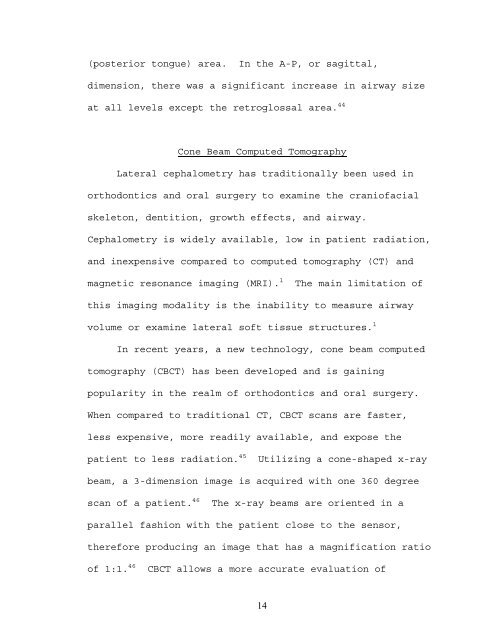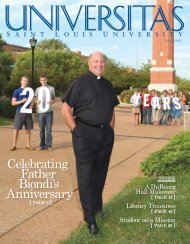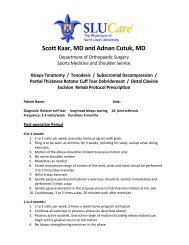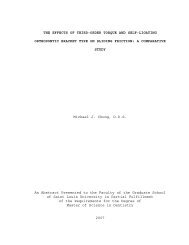PHARYNGEAL AIRWAY VOLUME FOLLOWING ...
PHARYNGEAL AIRWAY VOLUME FOLLOWING ...
PHARYNGEAL AIRWAY VOLUME FOLLOWING ...
Create successful ePaper yourself
Turn your PDF publications into a flip-book with our unique Google optimized e-Paper software.
(posterior tongue) area. In the A-P, or sagittal,<br />
dimension, there was a significant increase in airway size<br />
at all levels except the retroglossal area. 44<br />
Cone Beam Computed Tomography<br />
Lateral cephalometry has traditionally been used in<br />
orthodontics and oral surgery to examine the craniofacial<br />
skeleton, dentition, growth effects, and airway.<br />
Cephalometry is widely available, low in patient radiation,<br />
and inexpensive compared to computed tomography (CT) and<br />
magnetic resonance imaging (MRI). 1 The main limitation of<br />
this imaging modality is the inability to measure airway<br />
volume or examine lateral soft tissue structures. 1<br />
In recent years, a new technology, cone beam computed<br />
tomography (CBCT) has been developed and is gaining<br />
popularity in the realm of orthodontics and oral surgery.<br />
When compared to traditional CT, CBCT scans are faster,<br />
less expensive, more readily available, and expose the<br />
patient to less radiation. 45 Utilizing a cone-shaped x-ray<br />
beam, a 3-dimension image is acquired with one 360 degree<br />
scan of a patient. 46 The x-ray beams are oriented in a<br />
parallel fashion with the patient close to the sensor,<br />
therefore producing an image that has a magnification ratio<br />
of 1:1. 46 CBCT allows a more accurate evaluation of<br />
14

















